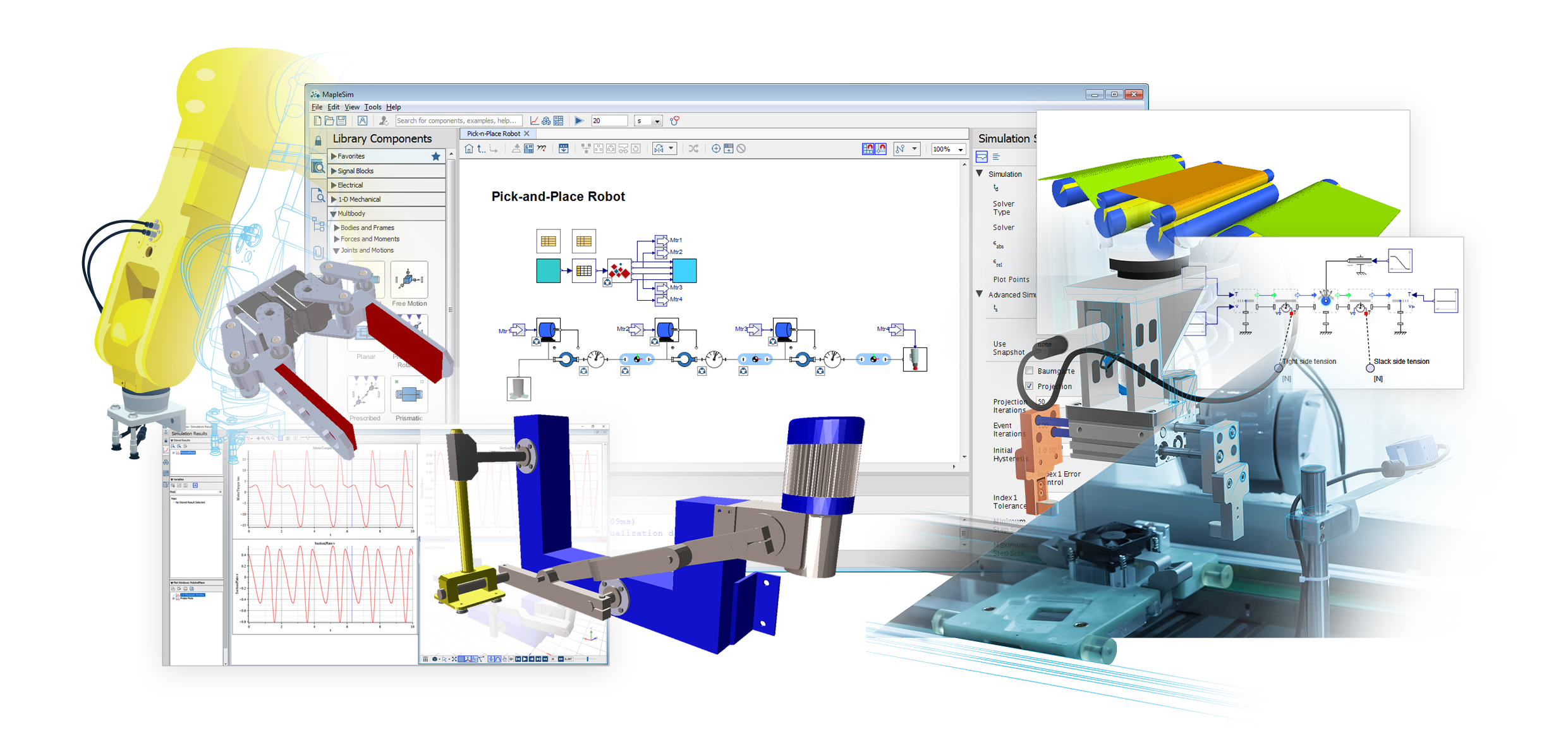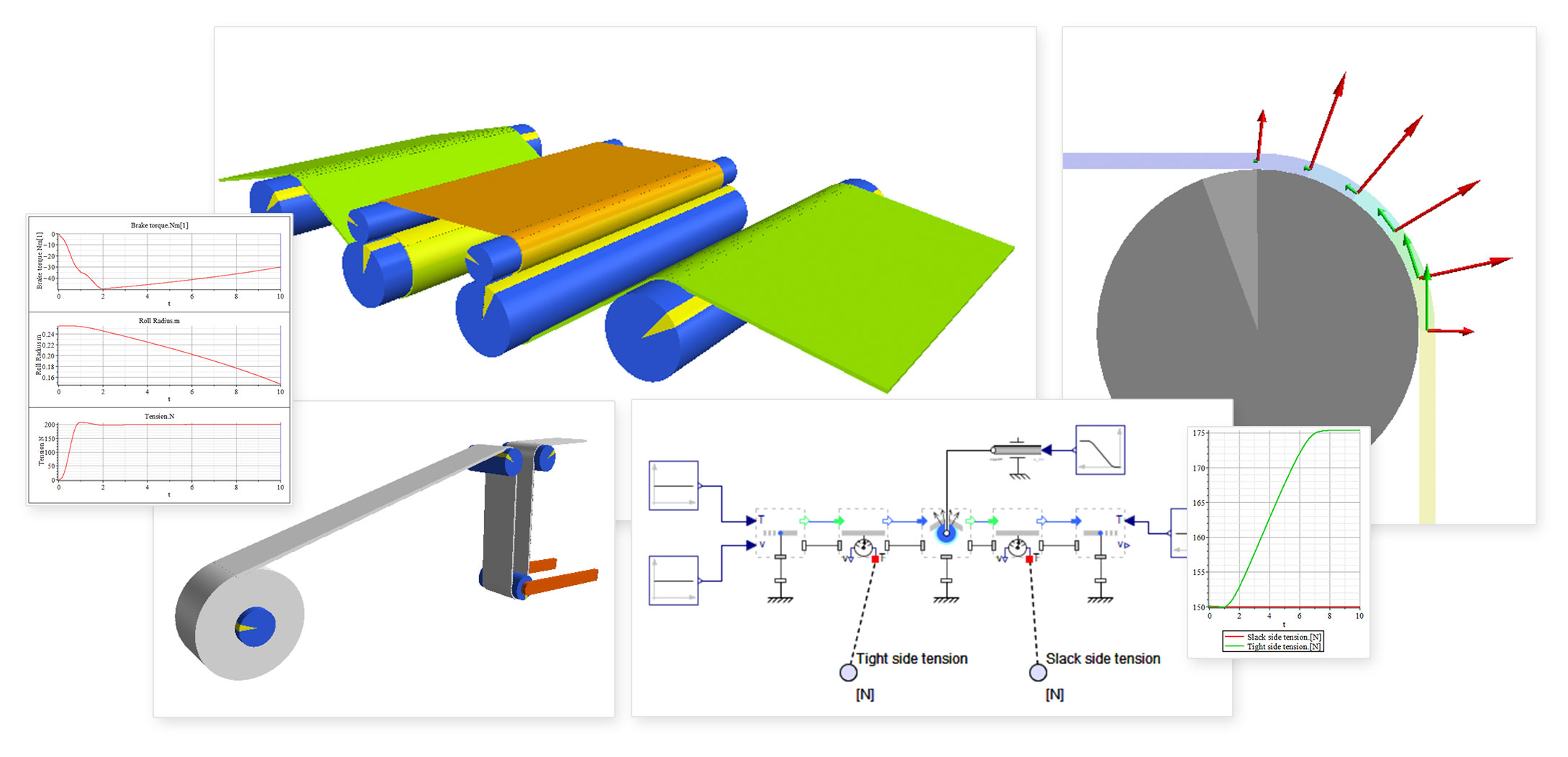In response to feedback from engineers in the field, MapleSim 2021.2 provides important updates to a variety of built-in and add-on libraries and toolboxes that make developing models more efficient.

- Expand your modeling scope and reduce model creation time with new built-in components, including additional control-valves and pressure-reducing valves for the Hydraulics and Pneumatics libraries.
- Speed up the creation of models that use hydraulics through the addition of new productivity features:
- The default units for common pressure and flow hydraulics parameters can be set globally using Summary Variables.
- Smoothing transitions can be applied to ramp inputs in hydraulic valves.
- A Flip checkbox available in control valves gives a simple way to simulate a reverse flow.
- Take advantage of new Coefficient-of-Friction Tire (COFT) components to simulate non-pneumatic tire characteristics. This allows the modeling of drift conditions for indoor autonomous robots.
- Test your model in different terrains with new tools for generating testbed surfaces and custom terrains, which you can then use to test wheel responses. Terrains can be generated from equations or using a MapleSim app to import data points from Excel.
- Improve the flexibility of tire slip formulation with the option of using the Damped Transient calculation method.
- Simulate the 3D winding effect of winches. The 3D Winch component, found in the add-on MapleSim Ropes and Pulleys Library, accounts for the additional mass, inertia and change in diameter of the material as it is being wound and unwound.
- Import the latest CAD files with the updated MapleSim CAD Toolbox add-on. Support is available for the most recent software releases of Inventor®, NX®, SOLIDWORKS®, CATIA® V5, Solid Edge®, 3D ACIS® Modeler, Pro/Engineer® / PTC® Creo Parametric™, Parasolid®, AutoCAD® 3D, and I-deas®.
- Gain greater visibility over handling events with the MapleSim Connector for FMI. The exported FMU fixed-steps solvers now have the option of determining “intermediate” step values during integration. Catching discrete event transitions at the time they occur helps balance stability and speed.
- Get full 3D visualizations of your model when running MapleSim from the command line. The same high-quality range of 3D and 2D plots and visuals available in MapleSim Insight are now accessible from the MapleSim API.
The new MapleSim Web Handling Library brings additional resources to better simulate your roll-to-roll processes. Using this add-on library, you can model the tensioning and torque when handling paper, plastics and foils, and optimize the web speed and controllers to reduce web slippage.
- Understand and improve the behavior of your web as part of a larger, system-level multidomain model of your machine.
- Create and analyze tensioning and traction on rollers and drums with system-level modeling of the roll-to-roll process that allows the simulation of tensioning, torque braking and roller-slippage.
- Develop high fidelity models easily with specialized components for wind drums, nip rollers, dancers and accumulators.
MapleSim Insight gives machine builders powerful, simulation-based debugging and 3-D visualization capabilities that directly connect to your automation tools. With the 2021.2 release, MapleSim Insight can connect to even more controller development tools, while providing improved performance and visualizations.
- MapleSim Insight now speaks EtherNet/IP. It can use the protocol to link your controller code to the inputs/outputs of your virtual machine. As a result, MapleSim Insight can now work with tools like CODESYS in the virtual commissioning workflow, as well as other tools that support compiled Function Mock-up Units (FMUs), such as Rockwell Studio 5000® Environment and MathWorks® Simulink.
- Computational enhancements give faster performance where it counts, making it suitable for high-fidelity, real-time use-cases.
- New diagnostic information keeps you informed by providing feedback on communication latency and model computation times.













